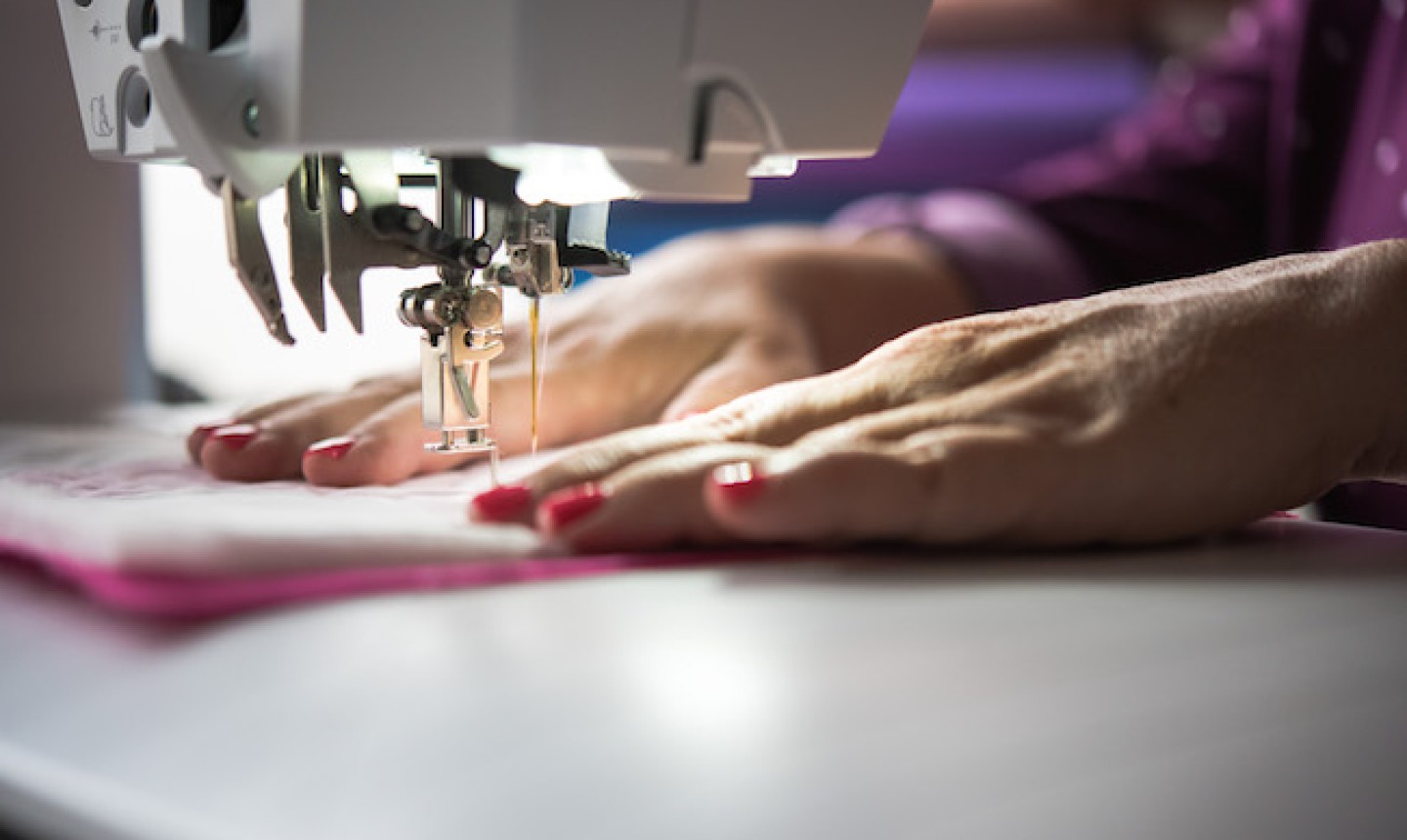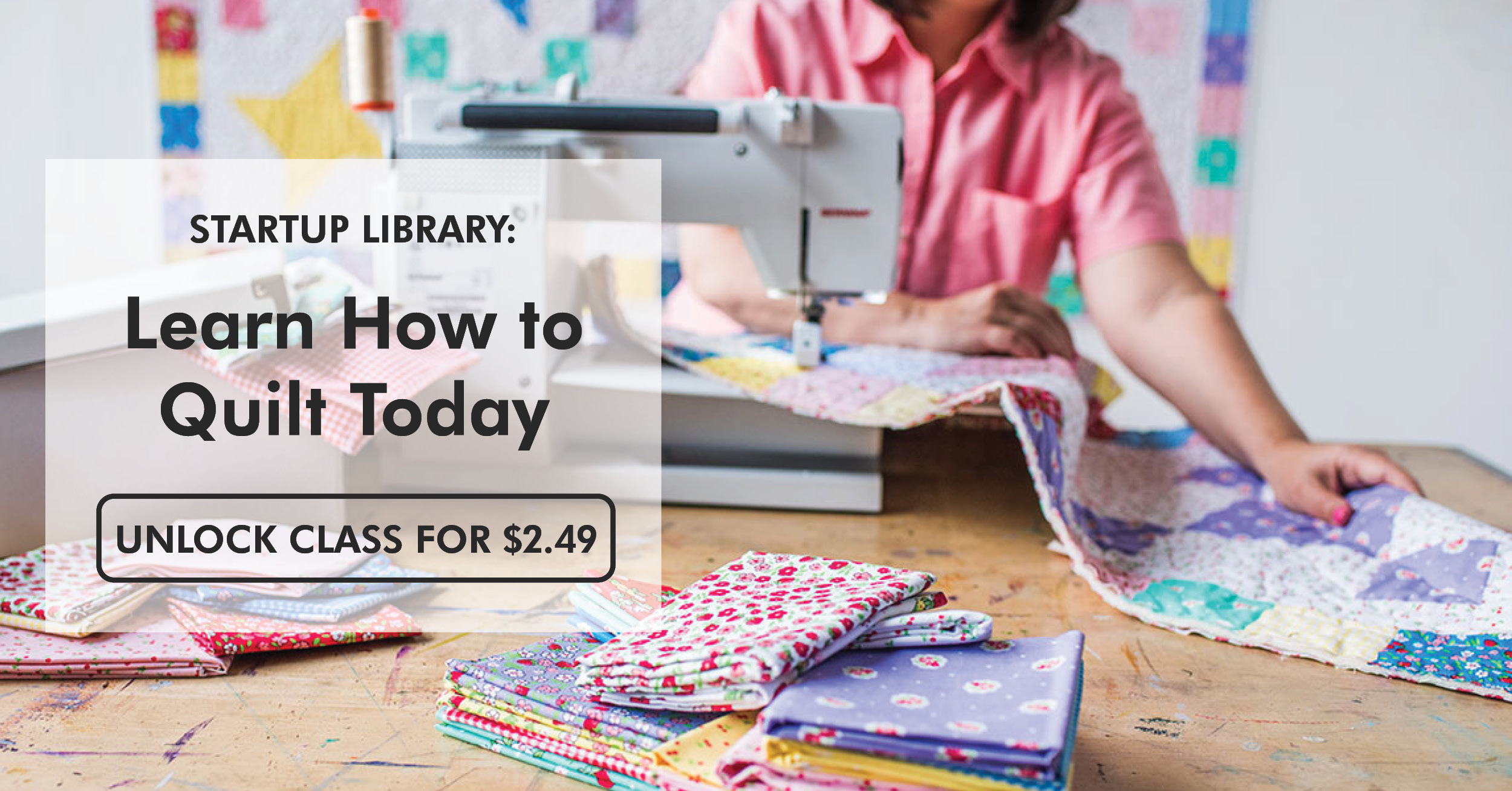
Sure, you can trick out a standard sewing machine so you can free-motion quilt. But if you’re in the market for a shiny new model, why not get one that will satisfy both your sewing and FMQ needs? These are the free-motion features you should keep an eye out for while shopping.
1. A Large Throat Space
Also called the harp space, this is the distance between the needle and the side of the machine, and having more room here allows you to move your quilt through the machine quickly and easily. Standard domestic machines, or short arms, typically only have about 6″–8″ of throat space, but thanks to the growing popularity of machine quilting, manufacturers keep producing roomier options. Look for a mid-arm option to get 12″–17″ of open space, or a long-arm for 18+”, and you’ll revel in all the room you’ve acquired.
2. An Open-Toe Darning Foot

Yes, any generic darning or free-motion foot can get the job done — but if you snag an open-toe foot, it’ll give you a better view of your stitching while you work. Being able to see the stitches directly in front of you makes it a lot easier to follow a line or designated stitching path, meaning your project will more than likely be done that much faster.
3. Feet That Easily Snap On and Off
While free-motion quilting is usually done with a darning foot, there are times when you may want to quilt with your walking foot. (Like when you’re adding the binding or doing any stitch-in-the-ditch quilting.) That’s why it’s ideal if you can quickly swap the presser foot without having to bust out a tool box. Being able to use both lets you have the freedom and control you’re after to create the project of your dreams.
4. Easy Bobbin Access
If you regularly switch up your thread, an easy-to-access bobbin is a must. It basically eliminates unnecessary hassle — no more taking the quilt off every time you need a thread change! If you can find a machine that also accommodates extra large bobbins and lets you adjust the bobbin tension separately, well, you’ve arrived in quilting heaven.
5. Needle Up/Down Function

Although many FMQ designs can be stitched continuously, some may require starts and stops. (Plus, sometimes you have to stop and adjust your quilt to manage all that bulk.) In general, it’s good to rest with your needle in the down position, so your work doesn’t accidentally move around — if that happens, it could result in an extra long, jagged, or out of place stitch that’s a pain to go back and fix. But without an up/down function, the needle automatically stops in the up position. So having that capability can be pretty big for preventing unnecessary problems and maintaining your sanity.
6. Ability to Drop or Cover the Feed Dogs
The little “teeth” underneath the presser foot are known as the feed dogs, and they control the fabric moving through the machine when stitching normally. But when free-motion quilting, you’re in charge of pushing the quilt through the machine. So rather than fight with your feed dogs, you want to be able to drop them out of the way so you can do your thing.
If that’s not possible, the next best solution is being able to cover them with a Supreme Slider. These slippery mats not only cover the teeth, but also help your quilt glide more smoothly under the needle. Double win!


<strong>I have tried to free-motion quilt but it's a mess. Maybe this class will help
what machine do you recommend for a beginner?
Based on these 6-features, what machine would be recommended for a low to medium cost?
Thxs for information.